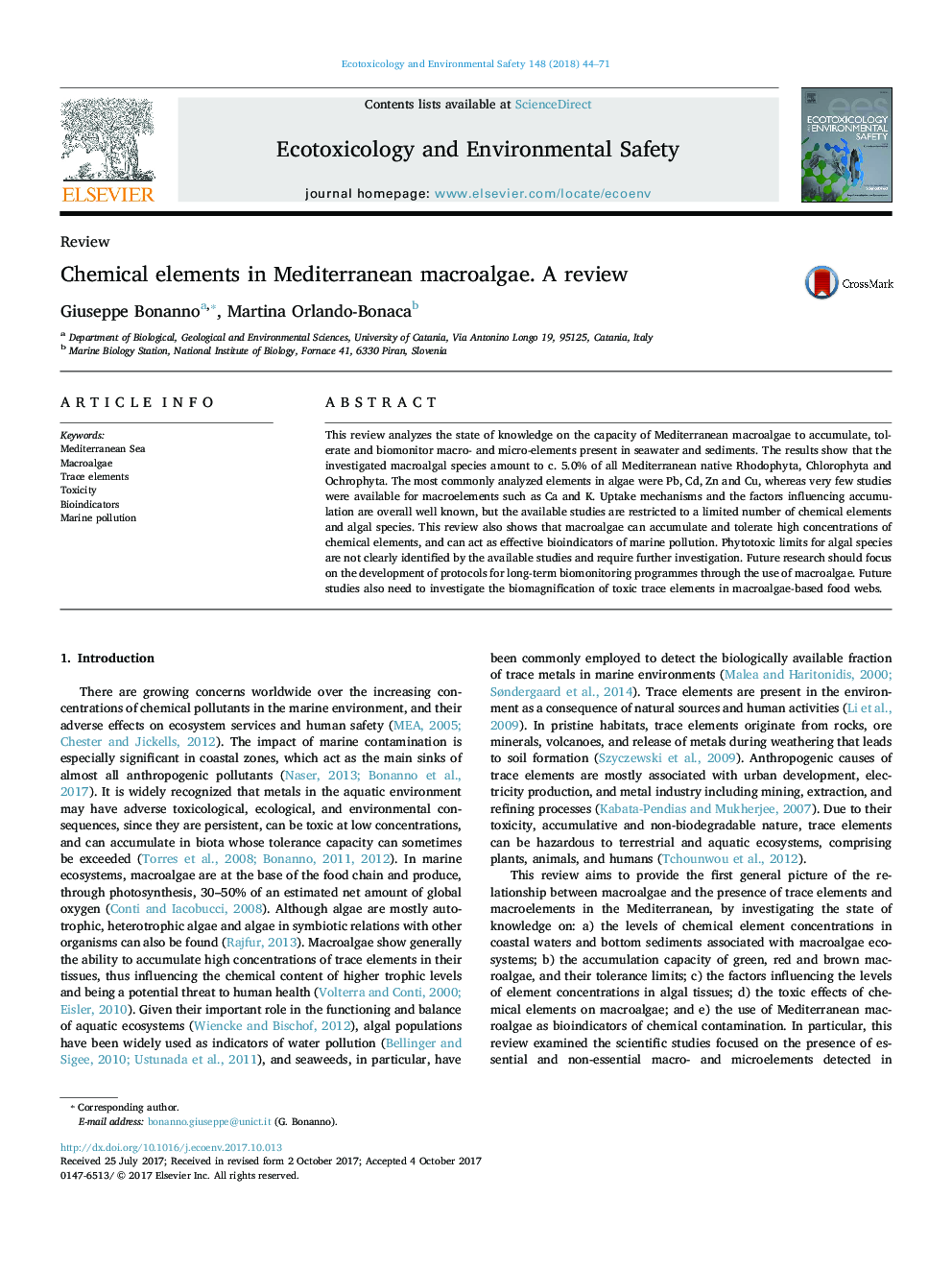| Article ID | Journal | Published Year | Pages | File Type |
|---|---|---|---|---|
| 5747453 | Ecotoxicology and Environmental Safety | 2018 | 28 Pages |
â¢Chemical element concentrations are known for few Mediterranean macroalgal species.â¢The relationship between chemical elements in sediments and macroalgae is not clear.â¢Well-established phytotoxicological limits are lacking for Mediterranean macroalgae.â¢Macroalgae act as good bioindicators of trace element pollution in seawater.â¢Trace element biomonitoring with macroalgae needs validated protocols.
This review analyzes the state of knowledge on the capacity of Mediterranean macroalgae to accumulate, tolerate and biomonitor macro- and micro-elements present in seawater and sediments. The results show that the investigated macroalgal species amount to c. 5.0% of all Mediterranean native Rhodophyta, Chlorophyta and Ochrophyta. The most commonly analyzed elements in algae were Pb, Cd, Zn and Cu, whereas very few studies were available for macroelements such as Ca and K. Uptake mechanisms and the factors influencing accumulation are overall well known, but the available studies are restricted to a limited number of chemical elements and algal species. This review also shows that macroalgae can accumulate and tolerate high concentrations of chemical elements, and can act as effective bioindicators of marine pollution. Phytotoxic limits for algal species are not clearly identified by the available studies and require further investigation. Future research should focus on the development of protocols for long-term biomonitoring programmes through the use of macroalgae. Future studies also need to investigate the biomagnification of toxic trace elements in macroalgae-based food webs.
